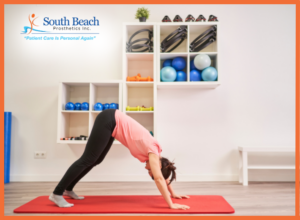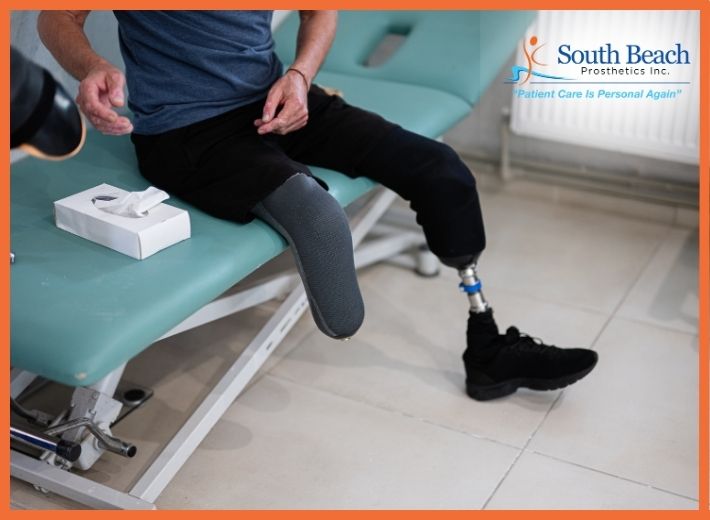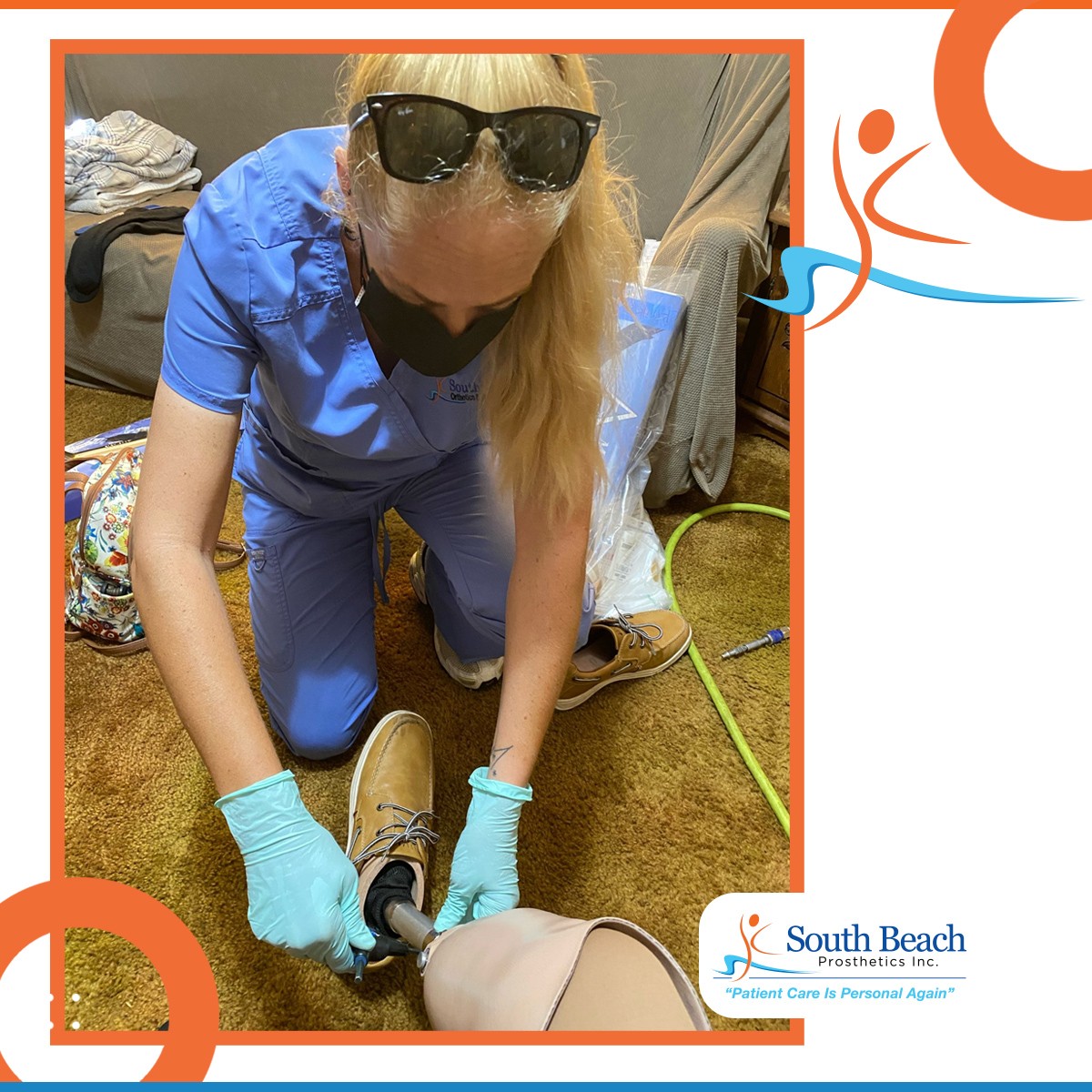An active lifestyle is essential for overall health and well-being, but it’s especially important for those who use prosthetics. Staying active helps maintain strength, flexibility, and a positive outlook. However, pushing too hard can lead to overuse injuries, putting a halt on your activities and progress. Find a balance with our guide here.
SIX WAYS FOR AMPUTEES TO AVOID OVERUSE INJURIES
Back pain, knee pain, shoulder pain, and wrist pain are all common issues for amputees, regardless of which limb or limbs is affected. These parts of the body are often asked to bear extra weight, are required to perform tasks at angles they aren’t intended for, and carry loads they aren’t exactly equipped to carry.
For acquired and congenital amputees, adaptations shouldn’t harm the rest of the body. Overuse injuries are cracks in the amputee’s autonomy—especially as age contributes to loss of strength and flexibility.
Attention to symptoms of overuse needs to start when the amputation occurs or soon after. For congenital amputees, it needs to start during childhood. Self-sufficiency needs to be the goal for both the short-term and long-term.
Laura Clubok, a pediatric occupational therapist, is a congenital amputee and owner of On the Other Hand Therapy in Columbus, Ohio. She is part of a growing group of amputees who advocate for early intervention to prevent overuse injuries in amputees. Laura was born with a left below-wrist difference. She earned her undergraduate degree at Harvard University and her master’s degree in occupational therapy (OT) at the Boston School of Occupational Therapy at Tufts University.
“Instead of adapting you to the world, adapt the world to you,” she tells others with amputations. “I feel strongly about spreading this message as an OT and as a person with a limb difference. It’s on my generation to share this with children and families.”
Laura says occupational therapy approaches are specific to every individual, depending on their amputation, size, gender, activities, and other factors. Overall, she recommends consulting with your doctor and OT to help you carry out these six important steps toward preventing overuse injuries:
- Set Up Your Medical Care Team: Establish relationships with and lean on your primary care physician, specialists, occupational therapist, and physical therapist. Consider adding add acupuncture, and massage, and chiropractic care.
- Reduce Fatigue and Manage Pain: Learn how to conserve energy, treat your pain, and simplify your work.
- Maintain Posture and Exercise Regularly: Aim for flexibility, strength, and symmetry.
- Adapt Your Home Base: Reduce strain by choosing tools that can help you accomplish essential tasks.
- Hack the World Around You: Find out what accommodations are available to you, and take advantage of them.
- Focus on Emotional/Social Awareness: See a therapist to discuss ableist beliefs and body image issues, and join a support group.
For many amputees, especially congenital amputees, overuse injuries hit them in middle age and force them to reduce their activities and build entirely new sets of adaptations. The amputee who has been working at a desk faces carpal tunnel syndrome in their dominant and only hand; surgery to repair it is not a simple option. Amputees who have been physically active need shoulder repairs, a prospect that is much more daunting when it immobilizes their only arm. Hip and knee injuries for unaffected limbs may require surgery, rest, and/or physical therapy, reducing activity and decreasing muscle strength and stamina that can be difficult to regain.
“When I was born many years ago, physical differences were not celebrated,” Clubok says. “I felt uncomfortable when people noticed or drew attention to my hand, but I also wanted to do everything that my ten-fingered peers could. These competing desires created an unbearable bind: wanting to fit in while often standing out.”
Those feelings of insecurity led her to make adaptations in order to be able to do what her peers did and look just as “normal” doing it. She developed a mindset that overachieving and working herself to the point of physical pain would make her feel accepted.
“I am so thankful that I no longer feel and think this way, and I hope that no child or young adult feels this way either,” says Clubok. “Children and young adults with upper limb differences still make exhausting physical and mental compensations in their daily lives to function in a two-handed world. There is too little awareness of how cumulative strain can hurt bodies with asymmetries while they are ‘trying to do it all.’”
Clubok recently relaunched ontheotherhand.org, a website that supports individuals with limb difference, their families, and occupational therapists who have limb differences themselves.
“There are too many things that families raising children with upper limb differences—and the children themselves—still have to figure out on their own,” she says. “And there still are too many mainstream messages pushing children with differences to be superhuman overachievers.”
Clubok has also formed a practitioner group for occupational therapists with upper-limb differences with Amber Jenkins, assistant professor and doctoral capstone coordinator in the department of occupational therapy and health science at Rockhurst University in Kansas City. Jenkins was born with Poland Syndrome, which included a right-hand difference. The group’s members have a variety of upper-limb differences and are either occupational therapy practitioners or occupational therapy graduate students in master’s degree and clinical doctorate programs.
Clubok’s connection with other amputees on the Lucky Fin Project’s online support group for adults changed her trajectory by giving her the opportunity to talk with others about the physical and mental compensations she made as a child hoping to fit in.
“Meeting other adults like me over the past few years—people with beautiful souls who happen to have differences like mine—has profoundly changed my life,” she says. “I no longer see bodies like mine as defective or deficient, just different.”
Move with confidence, and find the best services and solutions with us. South Beach Prosthetics is here to help you every step of the way, from designing the prosthesis to getting you to the perfect fit. Contact us today at 888-819-4721. We offer in-home care, and we can bring you to appointments to see us if that is your preference: transportation is an included service! Follow us on Instagram for more tips.
Reference: [ https://livingwithamplitude.com/amputees-six-ways-to-avoid-overuse-injuries/ ]





